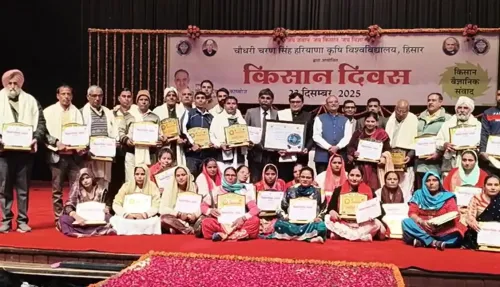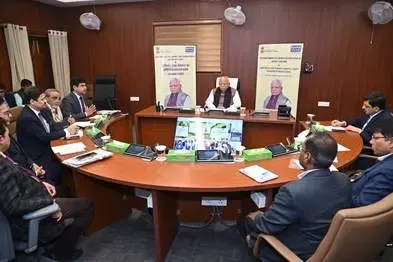Has Female Representation in India's Tech Contractual Workforce Reached 14% in 2024?

Synopsis
Key Takeaways
- Female representation in tech roles has increased from 1.90% in 2020 to 14% in 2024.
- Gender parity is most pronounced in the BFSI sector (46.88% women).
- Challenges such as cultural stereotypes and hiring practices hinder progress.
- Women in senior roles represent only 3.35% of the workforce.
- Companies need to focus on equitable resources to empower women in tech.
New Delhi, May 28 (NationPress) The representation of women in India's contractual tech workforce across non-tech sectors has seen a remarkable transformation, according to a report released on Wednesday.
The study conducted by TeamLease Digital, a dedicated staffing agency in India, revealed that female representation in tech roles within non-tech domains was just 1.90% in 2020. However, by 2023 and 2024, this figure climbed to 11.8% and 14%, respectively, marking a significant yet gradual change in traditionally male-dominated fields.
“The notable increase in female representation in tech positions within non-tech sectors from 1.90% in 2020 to 14% in 2024 signifies a hopeful shift towards inclusivity. Nonetheless, ongoing disparities in technical skill representation and leadership roles indicate the necessity for focused interventions,” stated Neeti Sharma, CEO of TeamLease Digital.
The journey of India Inc. towards achieving gender equality has shown steady advancements, even in sectors historically dominated by men.
The extensive analysis indicated that female representation surged from 9.51% in 2020 to 27.98% in 2024, suggesting an increasing momentum for diversity in a field long held by males.
This transformation emphasizes the heightened recognition of women's contributions to tech roles in non-tech sectors and the growing appreciation for diversity in innovation-driven functions.
Despite the progress, female representation in contractual tech positions remains inconsistent across non-tech industries.
While sectors like BFSI (46.88% women) and life sciences and healthcare (29.58% women) have made strides towards gender equality, others, such as manufacturing and engineering (4.82% women) and energy (6.25% women), continue to lag behind.
This disparity can largely be attributed to inflexible hiring practices, cultural stereotypes, and limited skill development pathways for women in core technical roles.
Another troubling statistic is the low representation of women in senior positions—only 3.35%. Women occupy 4.07% of mid-level roles and 3.03% of entry-level positions. This highlights a significant gap as male dominance continues to grow, while women face obstacles in reaching leadership positions.
However, between 2023 and 2024, there has been a commendable rise in female representation at mid and senior levels, increasing from 4.98% in 2023 to 5.14% in 2024 for mid-level roles. Similarly, representation in senior roles improved from 3.95% in 2023 to 4.86% in 2024, indicating a gradual yet positive shift towards gender parity, as detailed in the report based on a quantitative analysis of a proprietary dataset involving 13,000 associates.
“It is crucial for organizations to promote equitable resources for women, tackle industry-specific challenges, and empower women to take on a greater share of the workforce. By doing so, enterprises can tap into diverse talent pools, driving innovation and sustainable growth throughout India’s workforce,” Sharma emphasized.










